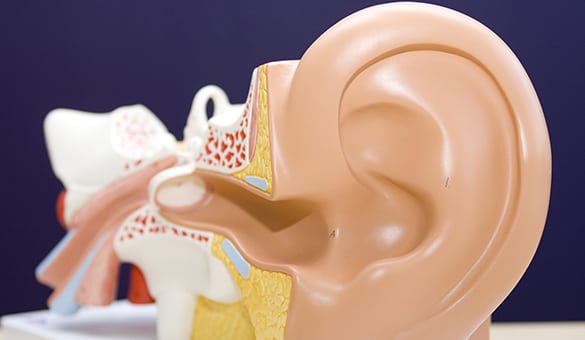
A parotidectomy can be performed to remove a troublesome parotid gland.
Located below and in front of each ear, parotid glands are the largest of the main salivary glands. These glands play a significant role in producing the lubrication necessary to provide protection against bacteria in your mouth, and they help with the process of swallowing and digesting food.
- Benign (non-cancerous) or malignant (cancerous) tumors may develop in these glands.
- When this happens, it’s sometimes necessary to remove part or all of the affected parotid gland, a procedure referred to as a parotidectomy.
Surgery Types
The most common type of parotidectomy is a superficial parotidectomy. During the procedure, the gland is removed superficial to the facial nerve, leaving the deep lobe in place. A variation of this is partial removal, where only the tumor and surrounding tissues are removed. With a total parotidectomy, the entire gland is taken out. All related branches associated with the gland are carefully reattached after the dissension is performed. If a radical parotidectomy is performed, the entire parotid gland is removed and the facial nerve is re-sectioned. If the cancer has spread beyond the affected parotid gland, the temporal bone and skin may also be removed.


Additional Procedures
In some cases, it’s necessary to perform additional procedures to remove all cancerous tissues. For some patients, this may include a neck dissection. In other instances, a facial nerve graft may be performed, usually in cases when a radical parotidectomy was done.
Before and During Surgery
A parotidectomy is performed under general anesthesia. Prior to surgery, image tests are typically performed to determine if the tumor or any related cancer is limited to the affected gland or if it has spread to other tissues. A special monitor is sometimes used to alert the doctor when the facial nerve is being stimulated. The purpose of this precaution is to minimize the risk of nerve damage.
Most procedures require an incision from the front of the ear down to the natural crease of the neck. Following this pattern also helps to conceal the scar. Deep lobe tumors may be accessed via the neck. In rare instances, the gland is reached through the mouth. A small drain may be temporarily inserted after the procedure is completed and left in place for a few days.
Parotidectomy Recovery and Aftercare
Following the procedure, medication is typically used to control any discomfort as the surgical site heals. Dry mouth isn’t usually a problem since there are other salivary glands that can provide sufficient lubrication, even with one less parotid gland.
You will be given instructions on how to handle bathing, showering, and facial washing following surgery. During a follow-up visit to an ear, nose, and throat doctor, the surgical site will be inspected and you’ll likely be asked if you are experiencing any lingering discomfort. Most patients are able to get back to their normal routines, including their usual eating habits, shortly after surgery.
An ENT doctor may place a barrier between nerve endings (where the gland was removed) and the skin to reduce the risk of developing Frey’s syndrome, a condition that results in facial sweating when eating. Generally, risks associated with a parotidectomy are mild. Some patients have numbness in the face and neck that typically decreases over time. Similar sensations around the earlobe on the ear closest to the removed gland may be permanent, although it is possible to get used to this feeling in time.


